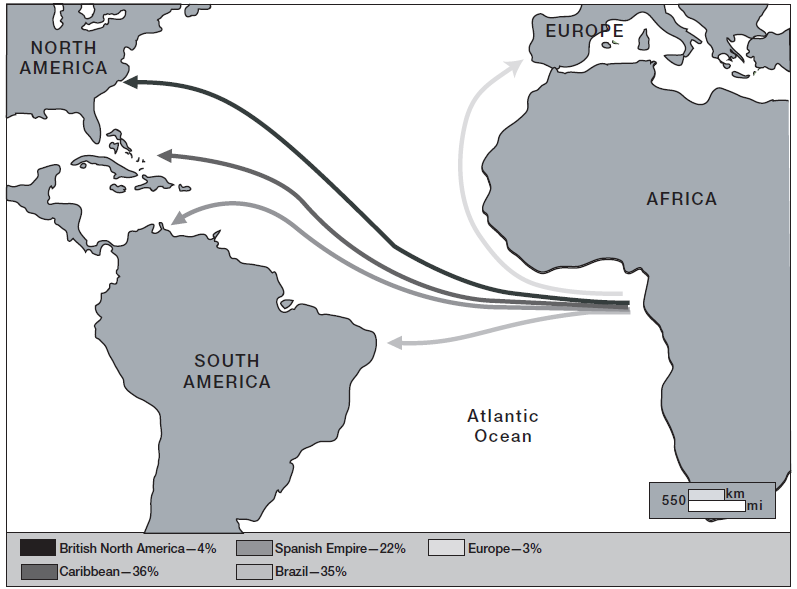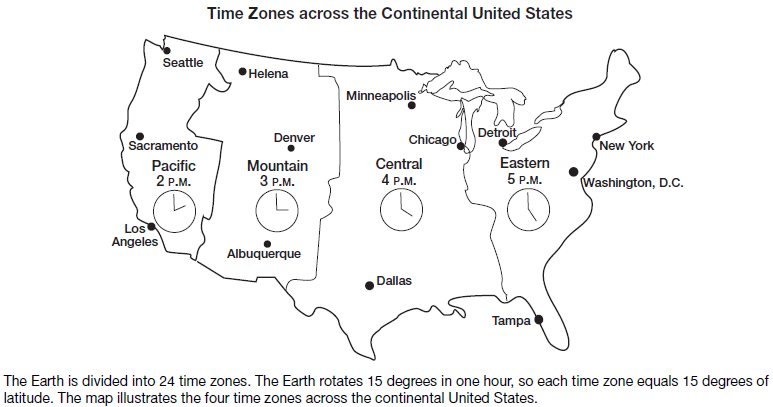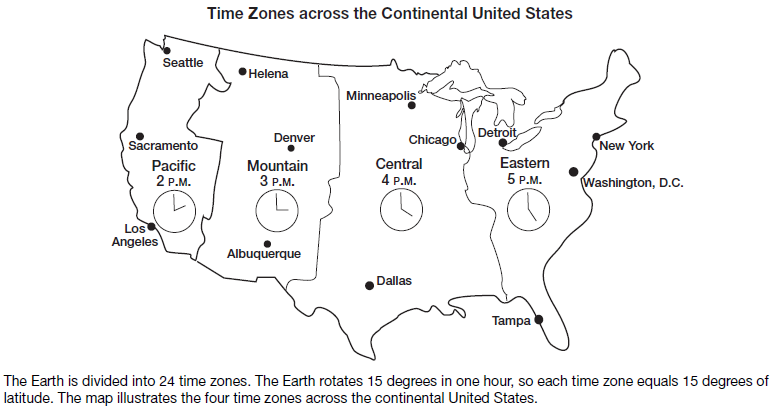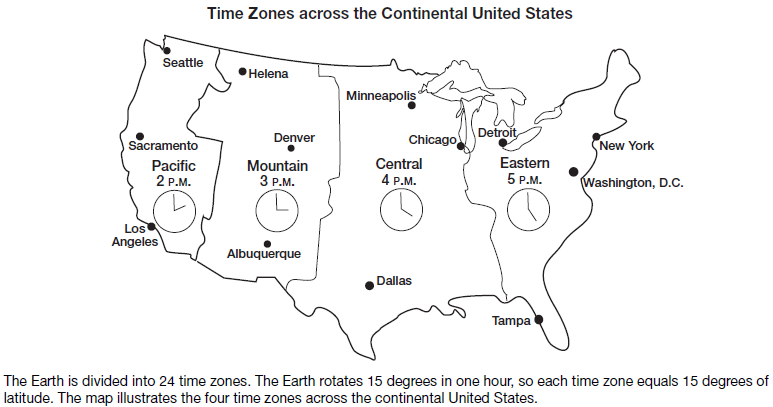

According to the information given in the map, which of the following conclusions can be drawn?
Correct Answer:
C
🗳️
According to the map, 40% of slaves went to the Caribbean and 38% went to Brazil, far more than other destinations in the Americas.
According to the map, what time is it in Dallas when it is noon in Sacramento?
Correct Answer:
A
🗳️
Dallas falls in the Central time zone, which is two hours ahead of Sacramento, located in the Pacific time zone.
What time is it in Sacramento, CA, when it is midnight in Tampa, FL?
Correct Answer:
D
🗳️
Sacramento falls in the Pacific time zone, which is three hours behind Tampa, located in the Eastern time zone.
As a traveler moves west, she can expect to?
Correct Answer:
B
🗳️
As illustrated on the map, a traveler would enter an earlier time zone as he or she moves west. According to the caption, each time zone "equals 15 degrees of latitude."